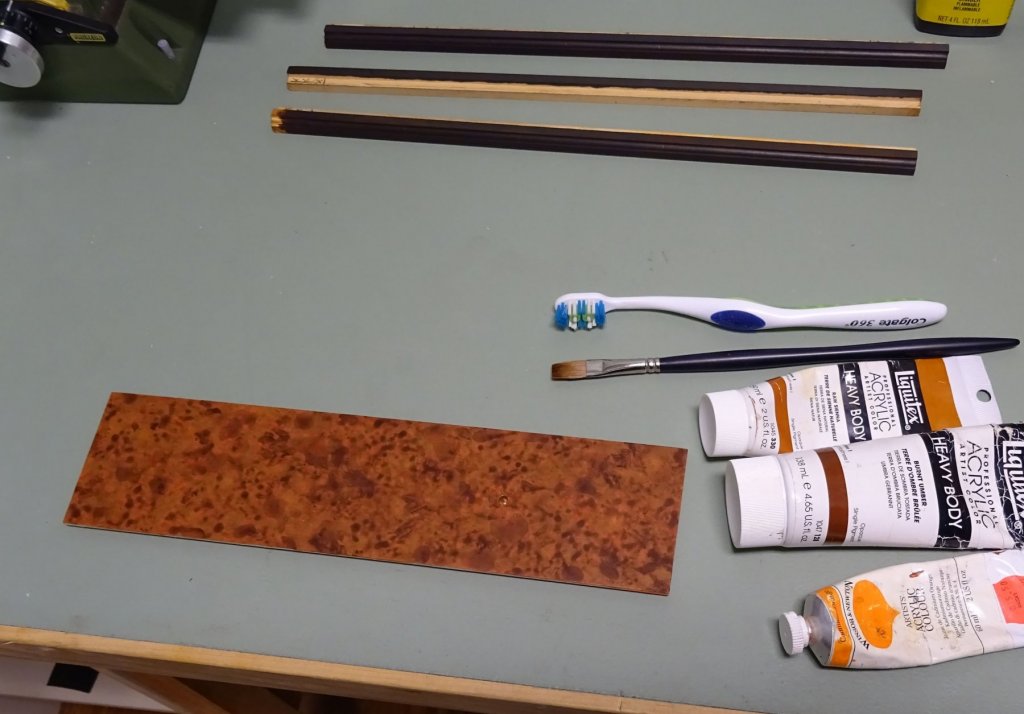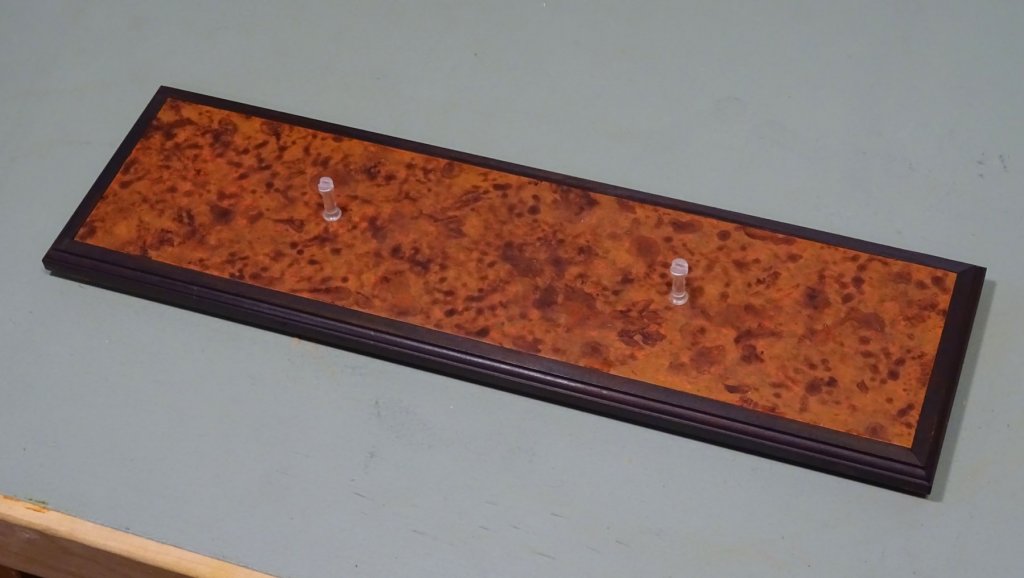-
Posts
13,290 -
Joined
-
Last visited
Content Type
Profiles
Forums
Gallery
Events
Everything posted by druxey
-
Those term sculptures are beautiful!
- 1,035 replies
-
- royal katherine
- ship of the line
-
(and 1 more)
Tagged with:
-
Loverly rendering work,Terry. Wasn't Paul Pry a character in a play?
- 21 replies
-
- capstan
- hand windlass
-
(and 3 more)
Tagged with:
-
I'd be highly wary of using dye on the ends of planks at the ports. It will be all but impossible to seal the grain sufficiently and yet allow the dye to penetrate - which is the whole purpose of dye as opposed to paint. Perhaps consider using acrylic paint or adhering pre-dyed paper instead? As for blue, the colors seen on contemporary models vary from a greenish-blue to a deep blue-black and everything between. Pick your poison! My personal preference is Humbrol matt 25.
-
Miserable SOBs!!!! What cheek! Again, my condolences. I suppose you could try calling their bluff for royalties....
- 346 replies
-
- terror
- polar exploration
-
(and 2 more)
Tagged with:
-
Well, E&T, welcome to the club of those of us whose work has been ripped off by the unscrupulous. I suppose imitation is the sincerest form of flattery, but it is still unethical and unconscionable. Unfortunately, unless you have very deep pockets and can afford international legal costs (which these pirates know only too well is unlikely) there is nothing you can do other than alert the moderators on this site to post a warning to members to shun this offering. My condolences.
- 346 replies
-
- terror
- polar exploration
-
(and 2 more)
Tagged with:
-
I did actually notice the original leaded lights were not quite right, but decided not to mention it. I'm so glad someone else did and that the new ones are so much better! Nicely re-done, Doris.
- 1,035 replies
-
- royal katherine
- ship of the line
-
(and 1 more)
Tagged with:
-
Dear Shipman, what you have written is a valuable reminder to us all: primary sources are always better and more reliable than secondary ones!
-
Impressive save with the hawses, Dan! You are making a very clean job of this model. I'm impressed.
-
With all due respect, the freeboard - the distance from waterline to lower gun ports - was between 4' 6" and 5' 0" when fully laden, not at launch. Were this so, the ship, when rigged, armed, provisioned and manned would not make it far out of harbor!
-
The overall effect of the gallery is quite charming. Have fun with the quarter pieces!
- 1,449 replies
-
This means completion in sight! Nice work on the case, Maury. What specie of wood is that?
- 525 replies
-
- anchor hoy
- hoy
-
(and 1 more)
Tagged with:
-
I agree with Greg that one needs to be extremely carful with dye. My own strategy for the bow end of the wale was to dye the foremost pieces before installing them on the model. Of course, there will be sanding of the wale after, but the extreme hooding ends of those planks should not need touching up with dye.
-
Nice realistic populating work, Dan. Happy holidays to you, too.
- 287 replies
-
- michelangelo
- ocean liner
-
(and 1 more)
Tagged with:
-
Your comment on canvas is interesting, HH. It was often painted, sometimes to resemble green patinated copper. Usually the canvas was laid down over wood boards. A real life example is seen on the roof of Prince Frederick's barge in the Royal Museums Greenwich.
- 1,035 replies
-
- royal katherine
- ship of the line
-
(and 1 more)
Tagged with:
About us
Modelshipworld - Advancing Ship Modeling through Research
SSL Secured
Your security is important for us so this Website is SSL-Secured
NRG Mailing Address
Nautical Research Guild
237 South Lincoln Street
Westmont IL, 60559-1917
Model Ship World ® and the MSW logo are Registered Trademarks, and belong to the Nautical Research Guild (United States Patent and Trademark Office: No. 6,929,264 & No. 6,929,274, registered Dec. 20, 2022)
Helpful Links
About the NRG
If you enjoy building ship models that are historically accurate as well as beautiful, then The Nautical Research Guild (NRG) is just right for you.
The Guild is a non-profit educational organization whose mission is to “Advance Ship Modeling Through Research”. We provide support to our members in their efforts to raise the quality of their model ships.
The Nautical Research Guild has published our world-renowned quarterly magazine, The Nautical Research Journal, since 1955. The pages of the Journal are full of articles by accomplished ship modelers who show you how they create those exquisite details on their models, and by maritime historians who show you the correct details to build. The Journal is available in both print and digital editions. Go to the NRG web site (www.thenrg.org) to download a complimentary digital copy of the Journal. The NRG also publishes plan sets, books and compilations of back issues of the Journal and the former Ships in Scale and Model Ship Builder magazines.





